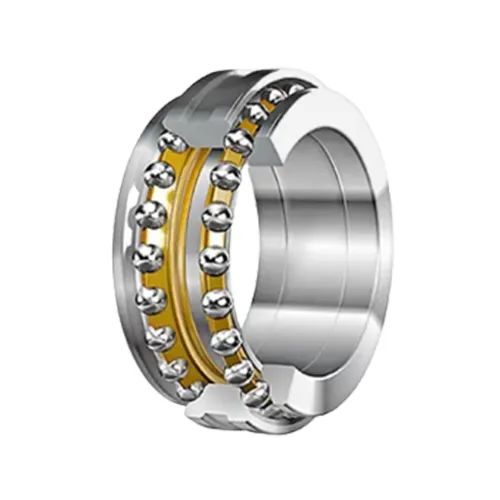According to the structural type of the bearing, the matching conditions with the shaft and bearing seat, and the existing installation conditions, the corresponding bearing installation method is formulated. No matter what installation method is used, one principle is that during the entire installation process of precision bearings, the rolling elements of the bearing must not be stressed.
The fit between the inner ring of the bearing and the shaft is generally an interference fit, while the outer ring and the bearing seat are mostly clearance fits, and trace interference fits are also used.
There are 4 commonly used methods to install bearings on the spindle. The details are as follows:

Use hand hammer and socket
This method is mostly used for the installation of small and medium-sized bearings where the fit between the bearing ring and the journal or bearing seat hole is not too tight. When selecting a sleeve, its size should correspond to the size of the bearing ring installed. The inner diameter of the sleeve for mounting the inner ring should be slightly larger than the diameter of the spindle shaft, and the outer diameter of the sleeve for mounting the outer ring should be slightly smaller than the bore diameter of the bearing seat. It is never allowed to hit the outer ring of the bearing when installing the inner ring of the bearing or the inner ring when installing the outer ring. This will transmit the hammering force to the other ring through the rolling elements and raceways, causing damage to the raceways and rolling elements. If the inner and outer rings of the separable bearing fit tightly with the journal and seat hole, the end face of the sleeve must be in contact with the end face of the inner and outer rings at the same time, and the end face of the sleeve must be flat and perpendicular to the center line of the sleeve.
When using a hand hammer to tap the sleeve to install the bearing, on the one hand, the force on the bearing will be unstable, and on the other hand, there will be an impact force on the bearing. Therefore, unless conditions are limited, this method is generally not recommended when installing precision bearings.
Use pressure devices
The pressure devices used in this installation method mainly include presses, presses, hydraulic clamps and hydraulic nuts. The characteristic of this method is that the bearing will not be directly struck, so the bearing is not easily damaged. However, when using this method, it is necessary to ensure that the pressure line coincides with the bearing axis line to prevent the bearing from tilting.
Use thermal charging method
When the interference of the bearing fit is large, it is difficult to install the bearing using a pressure device, and it is easy to damage the bearing's mating surface. Therefore, if the inner ring of the bearing is heated and expanded, the bearing will be easier to install into the spindle.
At present, magnetic induction heaters are often used to heat the inner ring of the bearing using the thermal loading method. The heating temperature of the bearing should not exceed 120C. The specific heating temperature depends on the size and interference of the bearing.
Since the size of the outer ring of the bearing also becomes wider during the heating process of the bearing, it is easy to create an axial gap with the shaft shoulder after the bearing is cooled. After the bearing is cooled, it will be in an interference fit state with the main shaft. Therefore, the thermal assembly method is used When the bearing is cooled, nuts or other suitable methods should be used to eliminate the axial clearance between the bearing and the shaft shoulder.
Inject pressure oil between mating surfaces
When there is interference between the shaft and the bearing, the friction between the mating surfaces is very large. When the interference is large, the mating surface may be damaged. If pressure oil is injected between the mating surfaces, the two mating parts will be slightly deformed, and the pressure oil will penetrate into the mating surfaces and form a lubricating oil film, which can greatly reduce the friction between the mating surfaces. In this way, the two mating parts can slide relative to each other with less force. This method is suitable for both the installation of conical surface fittings and the assembly and disassembly of cylindrical surface fittings.


